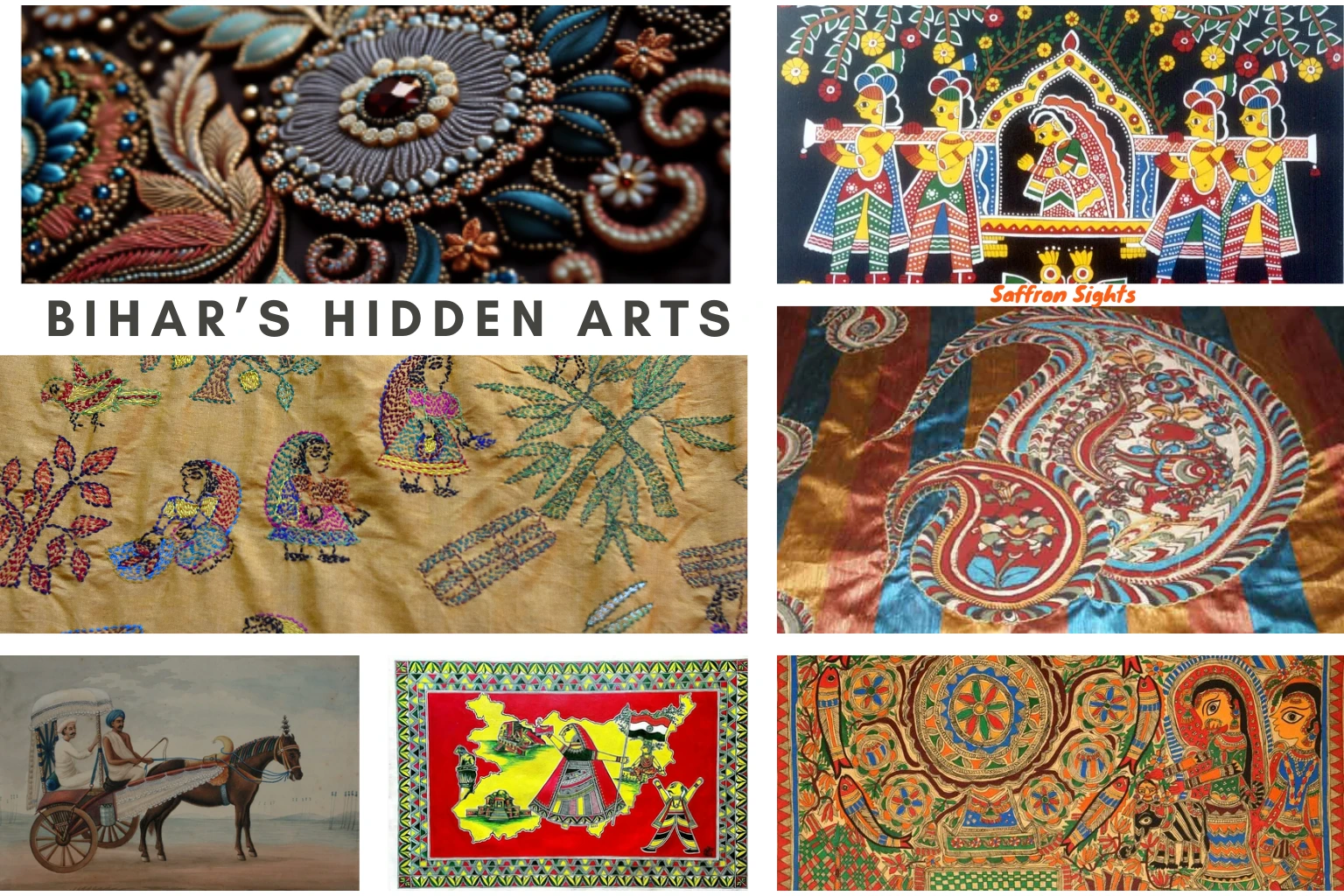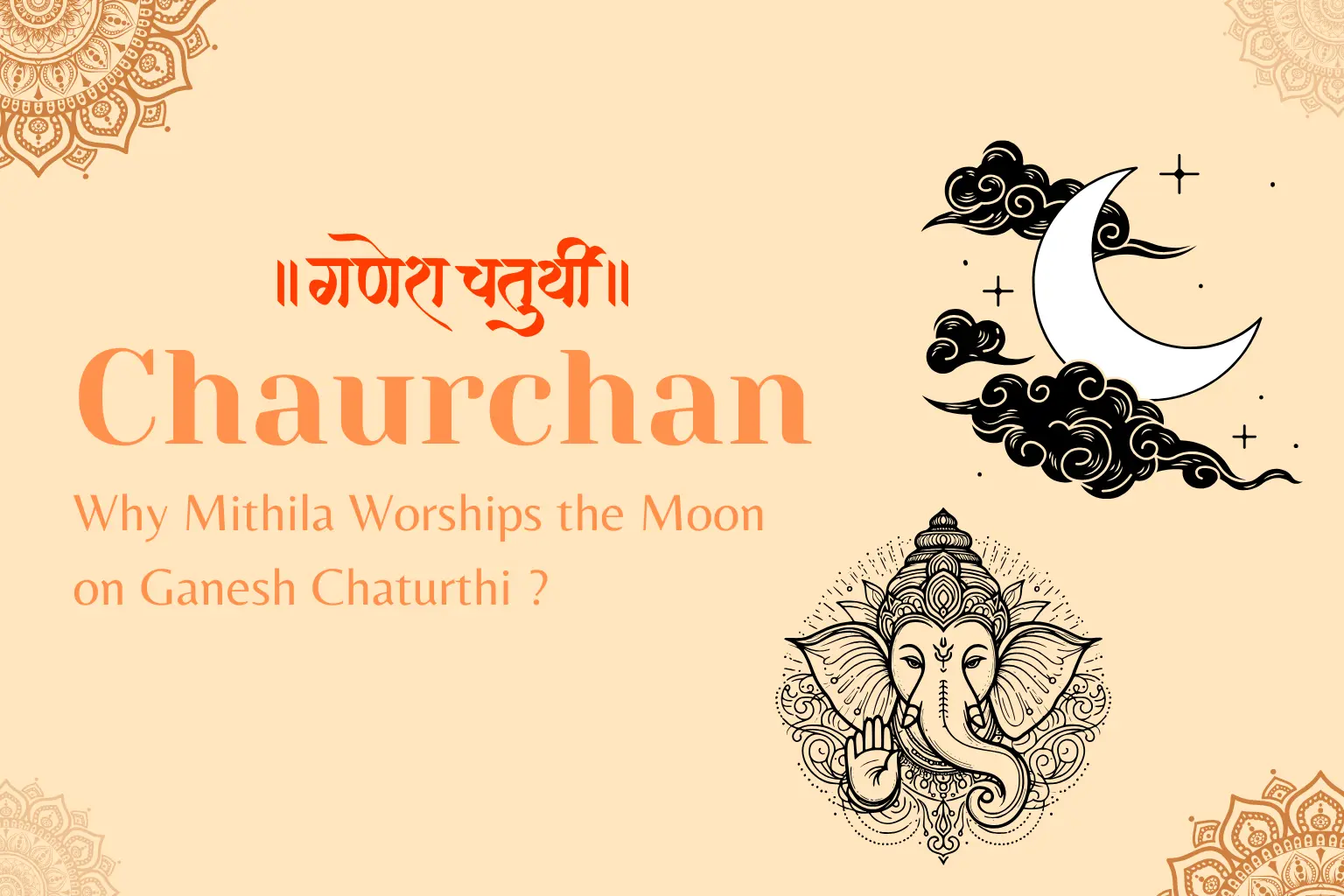When we think of Bihar’s art, most people picture Madhubani painting. It is beautiful and famous, yes—but Bihar’s artistic heritage is far richer. Over centuries, artists who faced wars, migrations, and changing rulers brought their skills here, shaping a colorful mosaic of traditions.
One such tradition is Chhapa Kala, a block-printing craft that arrived with Muslim artisans in the 18th century. But it is just one piece of Bihar’s vast cultural canvas. Alongside it, we find Patna Kalam, Manjusha, Tikuli, Sujani, Kohbar, and even Zardozi embroidery.
Let’s take a journey through these lesser-known but fascinating art forms.
Patna Kalam – The People’s Miniature Art
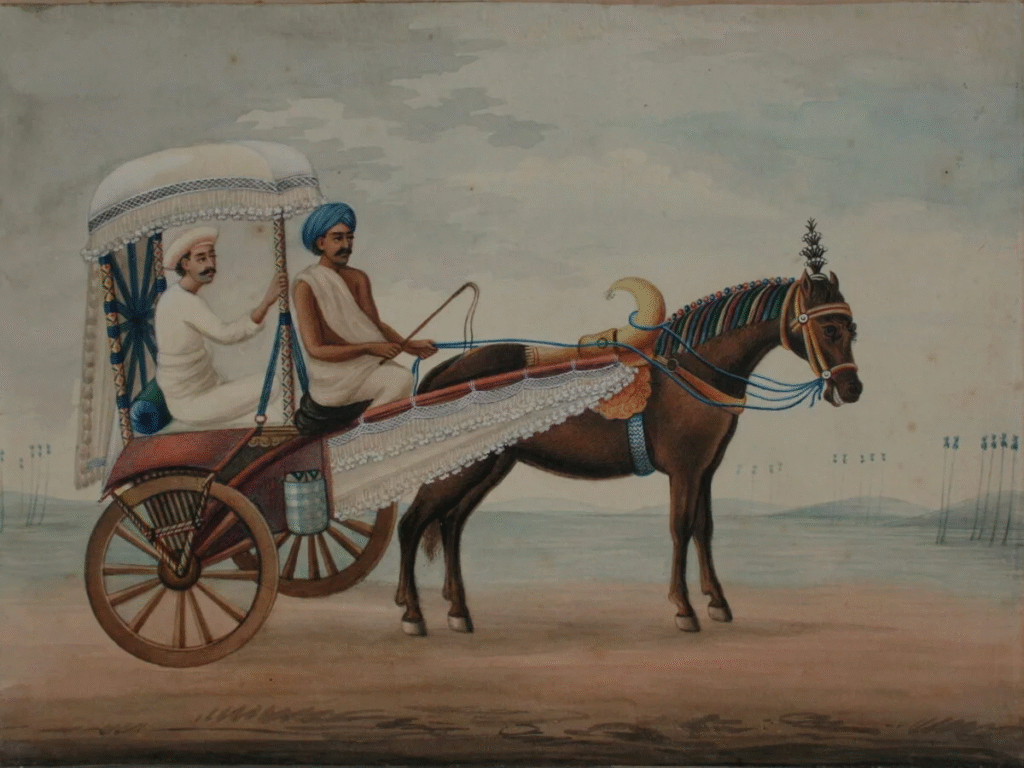
What is Patna Kalam?
Patna Kalam is a style of miniature painting that blossomed in Patna during the 18th and 19th centuries. Unlike Mughal miniatures that glorified kings and courts, Patna Kalam painted ordinary life — fishermen, festivals, bazaars, weddings, and river ghats.
Origin
- Born after the decline of the Mughal Empire, when artists from Delhi and Lucknow migrated east.
- Settled in Patna, they began painting for merchants and British officers.
- Sometimes called “Company Painting” because it catered to Europeans.
Purpose
- To capture daily life scenes as souvenirs for Europeans.
- To make affordable art for locals who weren’t royalty.
- To preserve cultural life in a time of political change.
Historical Context
- Used Mughal brushwork but added a European perspective and shading.
- Flourished in the 1760s to mid-1800s.
Stories & Legends
British officers often took Patna Kalam paintings back to England as “gifts” for families. In a way, these works were the postcards of their time.
Literary References
- Mentioned in travel writings of British officers.
- Collections now in museums in Patna, Kolkata, and London.
Past, Present & Future
- Past: Thrived for almost a century.
- Present: Survives only in museums.
- Future: Needs revival through teaching and exhibitions.
Fun Facts
- Sometimes painted on mica sheets.
- Always kept backgrounds minimal so the action stood out.
Chhapa Kala – Bihar’s Block Printing Heritage

What is Chhapa Kala?
The word Chhap means to print. Chhapa Kala is a traditional woodblock printing art, brought to Bihar by Muslim artisans. It decorated clothes like sarees, lehengas, and bridal dresses.
Origin
- Migrated from Lucknow and Delhi to Patna after invasions by Nadir Shah and Ahmad Shah Abdali in the 18th century.
- Became popular in Patna’s Sabzibagh, Shahganj, and Sadar Gali.
Purpose
- To create printed textiles for Muslim bridal wear and festive attire.
- To continue artisans’ livelihood after displacement.
Historical Context
- First used only red and green dyes.
- Later expanded to yellow, blue, violet, and pink.
- Noted by British chronicler Francis Buchanan (1811–12).
Stories & Legends
In many Bihari Muslim weddings, a Chhapa bridal dress with silver prints was considered the highlight of the ceremony.
Past, Present & Future
- Past: A respected craft in 18th–19th centuries.
- Present: Struggling against machine-printed textiles.
- Future: Revival possible through designer collaborations.
Fun Facts
- Each wooden block could take days to carve.
- Designs were passed down in artisan families like heirlooms.
Manjusha Painting – The Box of Stories
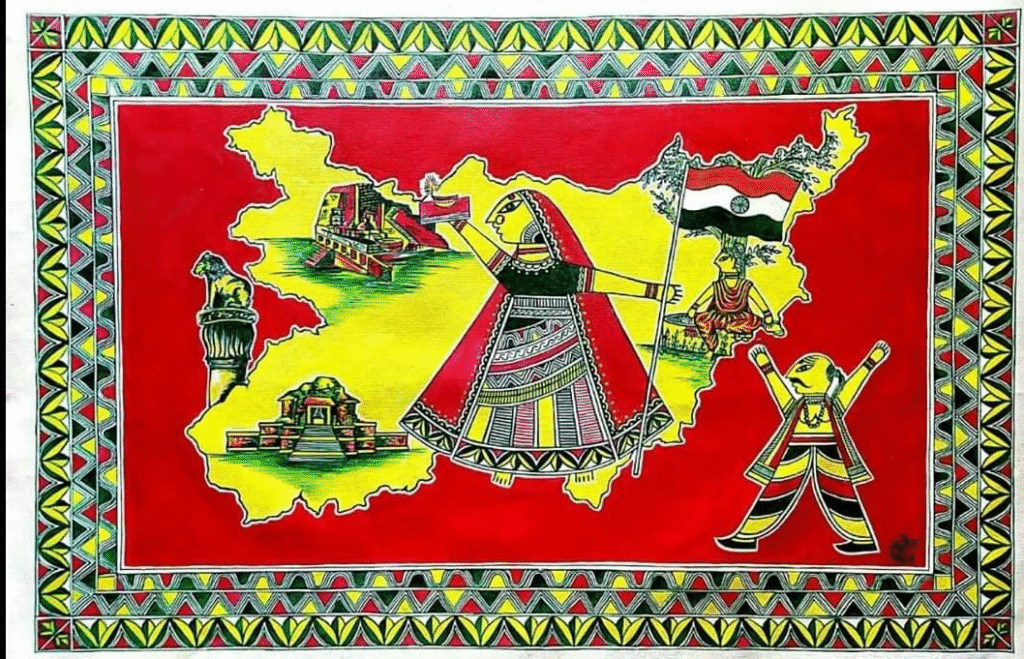
What is Manjusha?
Manjusha painting is a narrative art from Bhagalpur that tells stories on scrolls or temple-shaped boxes called “Manjusha.”
Origin
- Linked to the story of Bihula–Bishahari, a local legend about devotion and snake goddess worship.
- Dates back centuries, flourished in the 19th century.
Purpose
- To narrate myths visually during festivals.
- To preserve Bhagalpur’s folk stories.
Historical Context
- Traditionally used only three colors:
- Pink for love
- Yellow for spirituality
- Green for prosperity
- Pink for love
Stories & Legends
The most famous tale: Bihula’s devotion to save her husband from snakebite is painted in sequential panels.
Fun Facts
- Human figures are drawn in X-shaped postures.
- Borders always feature snakes — symbolizing the goddess.
Tikuli Art – The Painted Bindi

What is Tikuli Art?
“Tikuli” means bindi, the decorative dot worn on the forehead. Originating over 800 years ago in Patna, it evolved into painting on glass and now MDF boards.
Origin
- Artisans originally painted glass bindis with gold foil.
- Later expanded into decorative wall panels and coasters.
Purpose
- To decorate women’s foreheads with colorful, artistic bindis.
- Later became home décor and souvenirs.
Fun Facts
- Once sold widely across India.
- Today uses enamel paints on wood instead of glass.
Sujani Embroidery – Stories in Stitches
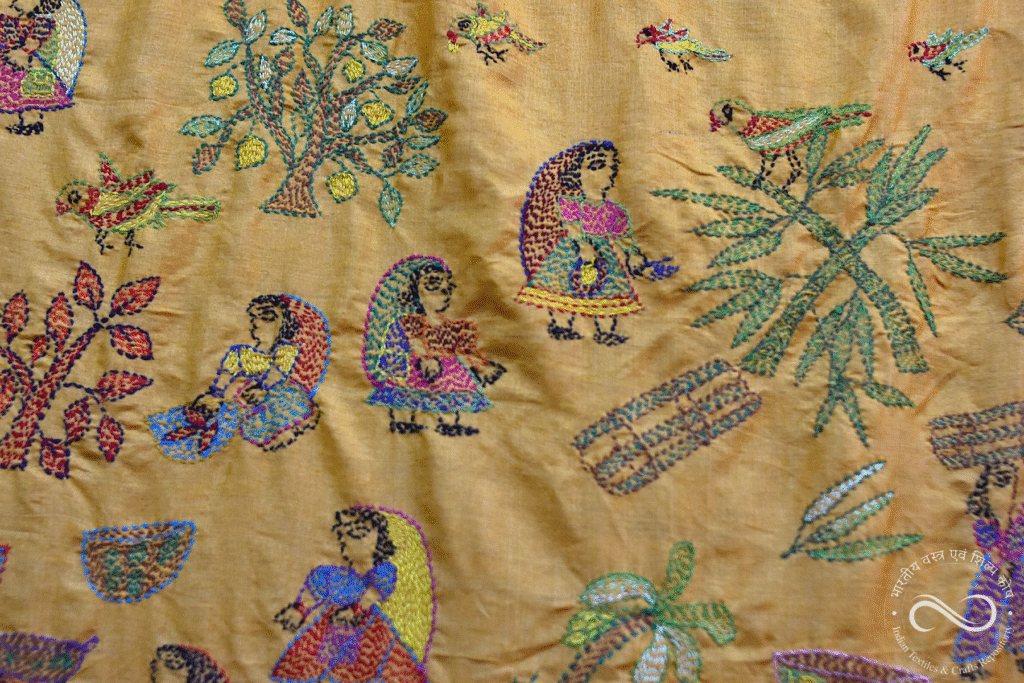
What is Sujani?
A folk embroidery from Muzaffarpur, Sujani stitches together old cloths and decorates them with motifs from daily life and mythology.
Origin
- Traditionally made by women in villages.
- Practiced in Bhusra, near Muzaffarpur.
Purpose
- To recycle cloth and create storytelling quilts.
- To express women’s voices through embroidery.
Stories & Legends
Mothers often stitched scenes of daily chores, animals, or gods onto quilts for their children — like giving them a “storybook blanket.”
Educational Value
- Sujani embroidery has been awarded a GI Tag for cultural protection.
Kohbar Painting – Art of Marriage Rituals

What is Kohbar?
Kohbar painting is a Maithil wedding ritual art, traditionally painted on the walls of the bridal chamber.
Origin
- Practiced by women of Mithila during pre-marriage rituals.
- Still used in Maithil weddings today.
Purpose
- To bless the couple with fertility, prosperity, and happiness.
Fun Facts
- Symbols include lotus, bamboo, parrots, and the sun — all linked with fertility.
- Now made on paper for commercial use.
Zardozi Embroidery – Royal Threads of Gold

What is Zardozi?
“Zardozi” means gold embroidery. It is a luxury craft brought to Bihar through Mughal traditions.
Origin
- Flourished during the Mughal period.
- Adopted in Bihar as artisans settled here.
Purpose
- To decorate royal garments, ceremonial dresses, and wedding outfits.
Present & Future
- Still used in bridal fashion in Bihar.
- Threatened by cheaper machine-made embroidery.
Key Takeaways
- Bihar’s art is not limited to Madhubani — it includes Patna Kalam, Chhapa Kala, Manjusha, Tikuli, Sujani, Kohbar, and Zardozi.
- Each art reflects migration, storytelling, and daily life.
- They are valuable for students, cultural enthusiasts, and exam preparation.
- Most face challenges today but hold potential for revival.
Frequently Asked Questions (FAQs)
Q1. What is the most famous art form of Bihar?
The most famous art form is Madhubani painting, but Bihar is also home to other important traditions like Patna Kalam, Manjusha, Sujani, Kohbar, Tikuli, Chhapa Kala, and Zardozi embroidery.
Q2. What makes Patna Kalam different from Mughal miniature paintings?
Patna Kalam focused on everyday life scenes like bazaars, ghats, and festivals, while Mughal miniatures mostly showed kings, battles, and divine figures. Patna Kalam also used European perspective and shading.
Q3. Where did Manjusha painting originate and what story does it tell?
Manjusha painting originated in Bhagalpur, Bihar, and it narrates the story of Bihula and Bishahari, linked to snake goddess worship.
Q4. What does the word “Tikuli” mean?
The word Tikuli means bindi, the decorative dot worn on the forehead. Tikuli art originally referred to glass-painted bindis with gold detailing.
Q5. What is Sujani embroidery and why is it important?
Sujani embroidery is a folk embroidery from Muzaffarpur, stitched with motifs of nature, mythology, and daily life. It is protected under a GI (Geographical Indication) tag and represents women’s storytelling traditions.
Q6. What is the cultural role of Kohbar painting in Mithila weddings?
Kohbar painting decorates the bridal chamber and carries symbols of fertility, prosperity, and marital happiness. It is considered an auspicious wedding tradition in Mithila culture.
Q7. How did Chhapa Kala block printing come to Bihar?
Chhapa Kala came to Bihar in the 18th century when Muslim artisans migrated from Lucknow and Delhi after invasions. They settled in Patna and developed block printing for bridal and festive dresses.
Q8. What is Zardozi embroidery and who used it?
Zardozi embroidery is gold and silver thread embroidery introduced during the Mughal era. It was mainly used in royal garments, wedding dresses, and ceremonial textiles.
Q9. Which of these art forms are still practiced today?
- Still active: Sujani embroidery, Kohbar painting, Tikuli art, Zardozi embroidery.
- Struggling/rare: Patna Kalam and Chhapa Kala.
- Revived through festivals: Manjusha painting.
Q10. Why should students learn about Bihar’s folk art?
These art forms are part of India’s cultural heritage and often appear in competitive exams (UPSC, SSC, State PCS). They also teach how migration, tradition, and creativity shaped Bihar’s identity.

